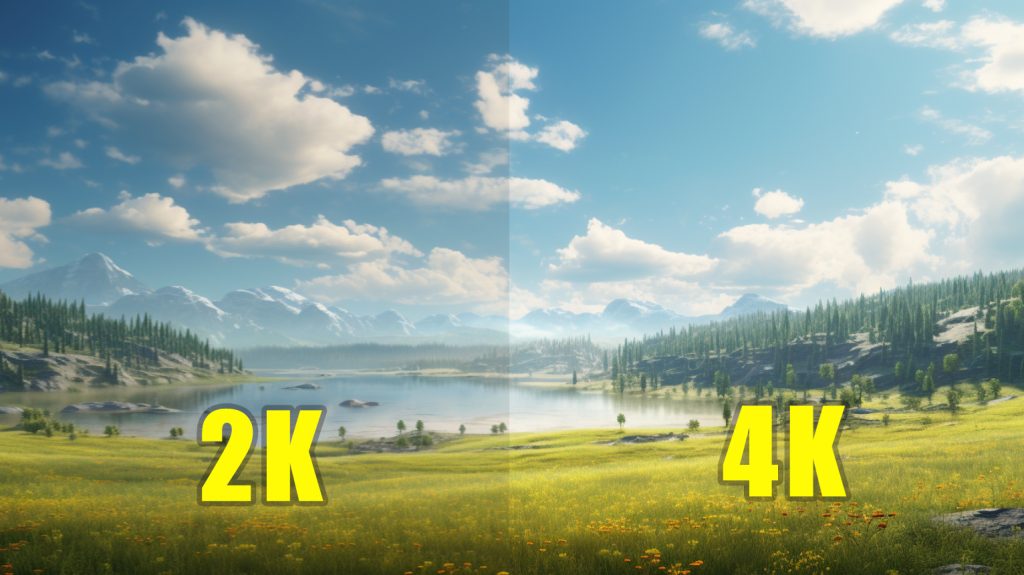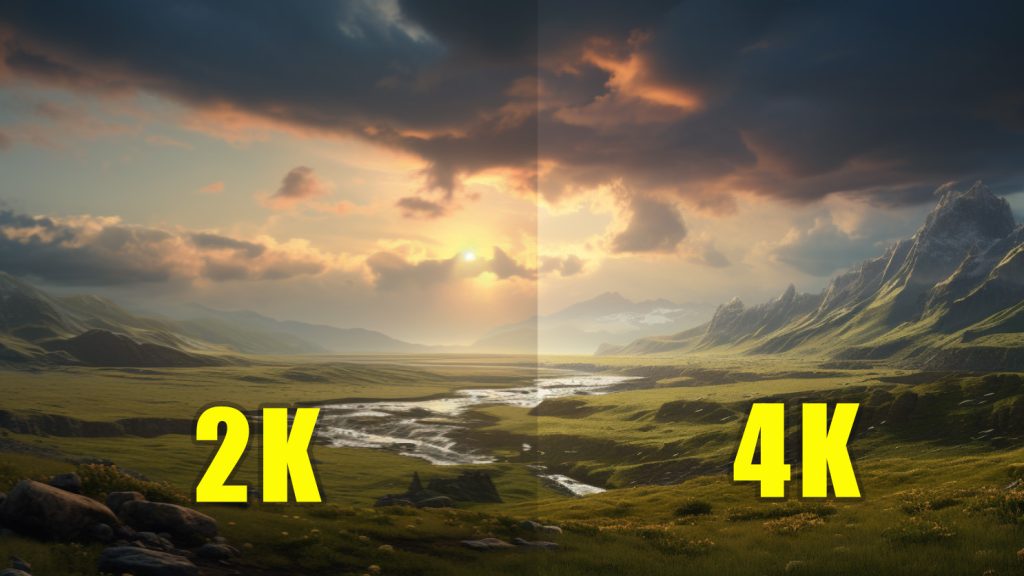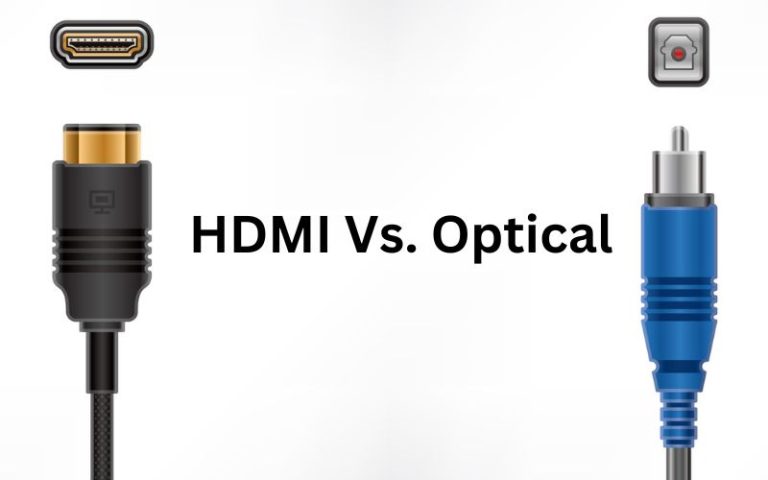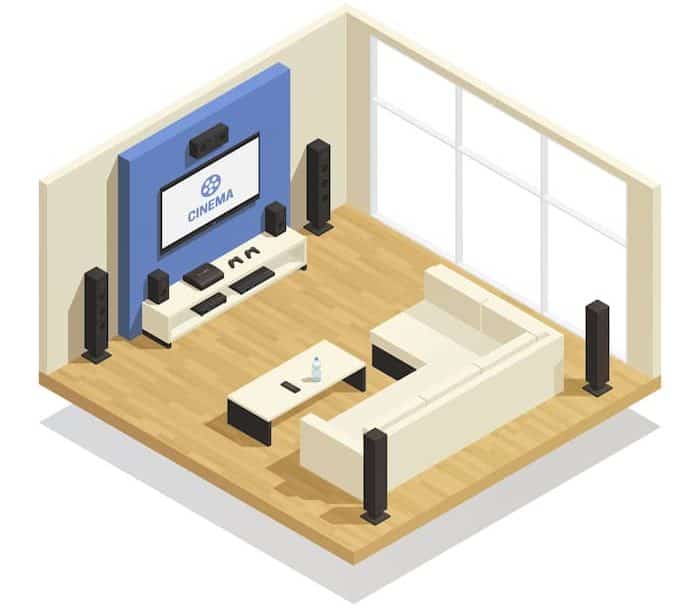4K vs 2K Resolution: Which Delivers Superior Clarity?
Whether you’re a gamer, a graphic designer, or simply an avid movie watcher, understanding the differences between 2K and 4K resolutions is paramount in making an informed decision.

4K resolution, at 3840×2160 pixels, offers four times the pixel count of 2K, which is 2048×1080 pixels. 4K provides sharper, clearer visuals, making it preferable for large displays and detailed content, while 2K is efficient for mid-sized screens and lower-end devices.
Let’s explore the topic of “4k vs 2k resolution” to help you dive into the world of pixels and aspect ratios and make the best choice for your needs.
Key Takeaways
Understanding 2K and 4K Resolutions
The image quality largely depends on display resolution, which refers to the number of pixels displayed on the screen at once.
The greater the number of pixels, the more detailed and sharp the image will appear, enhancing the overall visual experience.
Both 2K and 4K resolutions have their origins in the film industry, with 2K being a step above Full HD (1080p) and 4K emerging as Ultra HD.
2K Resolution Defined
2K resolution, an incremental improvement upon HD resolution, features:
- Horizontal resolution of 2048 pixels
- Vertical resolution of 1080 lines
- Aspect ratio of 17:9
- Pixel count of 2560 x 1440
- Total of 3,686,400 pixels
Common applications of 2K resolution include:
- Cameras
- Computer monitors
- Film and video production
- Gaming
Often referred to as Quad High Definition (QHD) displays, 2K monitors offer a sweet spot between Full HD and 4K in terms of price and performance.
4K Resolution Defined
4K resolution, also known as Ultra HD, takes a leap beyond 2K with a horizontal pixel count of approximately 4000, offering a stunning visual experience.
With an aspect ratio of 16:9, 4K resolution has a horizontal pixels count of 3840 and vertical pixels count of 2160 (8,294,400 pixels) or 4096 x 2160 (8,847,360 pixels).
These impressive numbers have led to the growing popularity of 4K resolution in consumer electronics and professional applications alike.
As 4K continues to gain traction in the market, it’s worth considering how this ultra-high-definition resolution might benefit your specific use case.
4K vs 2k Comparison Table
Here is a comparison table between the two resolutions:
| Feature/Aspect | 2K Resolution | 4K Resolution |
|---|---|---|
| Definition | Incremental improvement upon HD resolution | Known as Ultra HD |
| Horizontal Resolution | 2048 pixels | 3840 pixels (approx. 4000) |
| Vertical Resolution | 1080 lines | 2160 pixels |
| Aspect Ratio | 17:9 | 16:9 |
| Pixel Count | 2560 x 1440 (3,686,400 pixels) | 3840 x 2160 (8,294,400 pixels) or 4096 x 2160 (8,847,360 pixels) |
| Common Applications | Cameras, Computer monitors, Film and video production, Gaming | Consumer electronics, Professional applications |
| Image Quality | High definition | Ultra-high-definition, higher pixel count, sharper video, better image quality |
| Pixel Density | Lower than 4K | Higher than 2K |
| Display Quality | Good color accuracy, contrast, and brightness | Superior color accuracy, contrast, brightness |
| Visual Experience | Depends on screen size and viewing distance | More perceptible on larger screens and closer distances |
| Graphics Card for Gaming | Nvidia RTX 3070 or AMD Radeon RX 6800 | Nvidia RTX 3080 or AMD Radeon RX 6800 XT |
| Refresh Rate & Response Time | Good for gaming | Might have decreased rates and times due to higher resource requirements |
| System Compatibility Issues | PCs might not support 2K, loss of native resolution, non-compliant adapters | PCs might not support 4K, requires more powerful adapters |
| Cost | Generally cheaper, TVs priced under $300 | More expensive, TVs often priced around $500 or higher |
| Future-Proofing | Still widely available, likely to remain relevant for the foreseeable future | Becoming increasingly popular, likely to become the standard in the near future |
Also read: 1280×720 vs 1920×1080 vs 4K
Analyzing Image Quality: 2K vs 4K

When comparing the image quality of 2K and 4K resolutions, it’s essential to consider factors like pixel density, display quality, and the overall visual experience.
Although both resolutions are considered high definition, 4K offers a marked improvement over 2K in terms of pixel count, video sharpness, and overall image quality.
Examining the key differences between these two resolutions will help you discern which one might best suit your needs.
Pixel Density Comparison
Pixel density, measured in pixels per inch (PPI), plays a significant role in image clarity and detail.
With a higher pixel count in the same screen size, 4K resolution boasts a markedly higher pixel density than 2K, resulting in a much more detailed display with more pixels.
But how many pixels does it take to achieve this level of clarity? The total pixel count is a crucial factor to consider.
As a result, images and videos on a 4K display are not only more vivid but also more precise, providing an enhanced viewing experience.
Display Quality Evaluation
Higher resolutions like 4K and high definition resolutions have a direct impact on display quality, including color accuracy, contrast, and brightness.
With the ability to render a greater variety of shades and hues, 4K displays offer a more precise representation of colors and improved contrast compared to lower resolution displays like 2K.
Furthermore, the increased pixel count of 4K displays allows them to produce brighter images. Overall, the improved display quality offered by 4K resolution ensures a superior visual experience.
Visual Experience Differences
The noticeable difference in visual experience when comparing 2K and 4K content is influenced by factors such as screen size differences and viewing distance.
For instance, the higher pixel density of a 4K TV can be more perceptible and engaging than 2K if the screen size is substantial and the distance from the TV is relatively close.
However, as the viewing distance increases, the perceivable benefit of 4K diminishes significantly. Ultimately, the choice between 2K and 4K resolutions will depend on your specific needs and viewing preferences.
Compatibility and Performance: 2K vs 4K

Apart from image quality, compatibility and performance aspects are substantial factors to keep in mind when selecting between 2K and 4K resolutions.
Factors like graphics card requirements, refresh rates, and response times play a significant role in your overall experience.
Understanding how these factors vary between 2K and 4K resolutions can guide you in making an informed decision.
Graphics Card Requirements
To achieve 2K resolution (1440p) in gaming, a powerful graphics card such as the Nvidia RTX 3070 or AMD Radeon RX 6800 is required.
On the other hand, running games at 4K resolution (2160p) requires an even more powerful graphics card, like the Nvidia RTX 3080 or AMD Radeon RX 6800 XT.
Users with older or lower-end hardware may not be able to run games at 2K or 4K resolutions and may need to adjust the resolution or graphics settings to achieve a playable experience.
This highlights the importance of considering your hardware capabilities when choosing between 2K and 4K resolutions.
Refresh Rate and Response Time
Refresh rate and response time are particularly important for gamers, as they influence the smoothness of motion in videos, games, or sports broadcasts.
Gaming at 4K resolution requires more resources from the CPU, graphics card, and display, which may lead to decreased refresh rates and response times compared to 2K gaming.
However, for the average gamer, these differences may not be perceptible and are more likely to be relevant in competitive gaming settings.
System Compatibility Issues
Potential compatibility issues with older systems or devices when using 2K or 4K resolutions include:
PCs not supporting 2K resolution
Loss of native maximum resolution after a software update
Non-compliant graphics adapters
Screen resolution problems due to incorrect settings or drivers
Similar issues may arise with 4K resolution, but PCs may not support 4K resolution while they support 2K, and 4K resolution may require more powerful graphics adapters than 2K.
Choosing the Right Resolution for Your Needs

The decision between 2K and 4K resolutions will ultimately depend on your specific use case and priorities.
Whether you’re an avid gamer, a movie enthusiast, or a professional in the field of graphic design, each resolution has its advantages and drawbacks.
This section will guide you on making the best resolution choice that aligns with your unique requirements.
Gaming Considerations
For gamers, the choice between 2K and 4K resolutions involves weighing the benefits of improved visual quality against the drawbacks of increased system requirements and potentially reduced refresh rates and response times.
While 4K resolution is recommended for console gaming, such as PlayStation 5 and Xbox Series X, due to its incredibly sharp and detailed visuals, 2K resolution offers a more universal compatibility and can provide a more realistic and engaging experience at a lower cost.
Video Streaming and Content Availability
When it comes to video streaming, the availability of 2K and 4K content for streaming services varies depending on the service.
Some streaming services offer more 4K content than 2K content, while others offer a combination of both.
Additionally, the higher resolution of 4K content requires more bandwidth and data usage than 2K content.
Considering your internet connection speed and data limitations is important when deciding between 2K and 4K resolutions for streaming purposes.
Professional Applications
For professionals in fields like graphic design, photography, and video production, the choice between 2K and 4K resolutions can significantly impact the quality of their work.
While 2K resolution is adequate for filmmaking and videography, 4K resolution is preferable for graphic design, photography, and video production due to its higher pixel density and sharper details.
Ultimately, the choice between 2K and 4K resolutions for professional applications will depend on the specific requirements and priorities of your profession.
Cost and Future-Proofing: 2K vs 4K
In addition to the factors discussed above, cost and future-proofing are crucial considerations when choosing between 2K and 4K displays.
As technology continues to evolve, it’s essential to ensure that your investment in a display remains relevant and effective in the future.
This section will contrast the cost of 2K and 4K displays, and underscore the importance of future-proofing your technology investment.
Price Comparison
Generally speaking, 4K displays tend to be more expensive than 2K displays, especially when factoring in elements such as screen size, brand, and features.
Most 2K TVs are reasonably priced under $300. However, 4K TVs tend to be more expensive, as many of them cost around $500 or higher.
This price difference should be taken into account when deciding between 2K and 4K resolutions, bearing in mind your budget and specific needs.
Future-Proofing Your Display
The potential longevity of 2K and 4K displays is contingent upon numerous factors, including content availability, industry trends, and technological advancements.
At present, 2K displays are still widely available and are likely to remain so for the foreseeable future.
However, 4K displays are becoming increasingly popular and are likely to become the norm in the near future.
By considering these factors, you can make a more informed decision about which resolution to choose, ensuring that your display remains relevant and effective in the future.
Summary
In conclusion, the choice between 2K and 4K resolutions depends on a variety of factors, including your specific needs, priorities, and budget.
While 4K resolution offers superior image quality, greater detail, and improved color accuracy, it may also require more powerful hardware and increased bandwidth for streaming.
On the other hand, 2K resolution provides a more universally compatible and cost-effective solution without sacrificing too much in terms of image quality and overall experience.
Ultimately, the decision between 2K and 4K resolutions is a personal one that depends on your unique requirements and preferences.
Frequently Asked Questions
Is 2K to 4K a big difference?
Yes, 2K to 4K is a big difference as 4K resolution has four times the number of pixels than 2K resolution, resulting in significantly sharper details in displays. Additionally, 4K resolution also has a higher pixel density, making it the superior choice for crisp visuals.
Can the human eye tell the difference between 2K and 4K?
With high visual acuity, you may be able to tell the difference between 2K and 4K resolution, but if you’re watching from a distance, you’ll need a large display to appreciate the difference between 1080p and 4K.
For readability, it’s important to break up your text into paragraphs. Start a new paragraph whenever you introduce a new idea or change direction in your argument. This will make your text easier to read and understand.
Do I need 2K or 4K?
For TV use, 4K TVs are more noticeable and immersive than 2K TVs due to their increased pixel density. Professionals may opt for the 4K resolution, while gamers may choose a 2K resolution. Ultimately, it depends on individual preference and budget – 4K TVs will cost more.
What is the main difference between 2K and 4K resolutions?
The main difference between 2K and 4K resolutions is the pixel count, with 4K offering a much higher density for a sharper image.
Is 4K resolution worth the investment for professional applications?
4K resolution provides professional fields such as graphic design, photography, and video production with increased image quality and detail, making it a beneficial investment. Investing in 4K resolution can help professionals in these fields create higher quality images and videos, and can be a great way to increase productivity and efficiency.
Sources
- Wikipedia: https://en.wikipedia.org/wiki/4K_resolution
- Samsung: https://www.samsung.com/tvs/all-about-tv/
- Lenovo FAQs: https://www.lenovo.com/faqs/pc-life-faqs/what-is-ultra-high-definition
- Best Buy: https://www.bestbuy.com/tips-ideas/
- TechTarget: https://www.techtarget.com/definition/4K-video
- Riverside.fm: https://riverside.fm/recording
- CNET: https://www.cnet.com/tech/home-entertainment/f/
- Business Insider: https://www.businessinsider.com/reviews/tech
- PC Magazine: https://www.pcmag.com/news/home-entertainment
- Tom’s Hardware: https://www.tomshardware.com/news/2k-definition
- Wikipedia: https://en.wikipedia.org/wiki/2K_resolution
- Lenovo: https://www.lenovo.com/faqs/pc-life-faqs/what-is-2k-resolution
- Wondershare Recoverit: https://recoverit.wondershare.com/video-recovery
- Digital Citizen: https://www.digitalcitizen.life
- V7 World: https://www.v7world.com/news-events/hd-2k-4k-
- Streaming Media: https://www.streamingmedia.com/ReadArticle
- Headend INFO: https://headendinfo.com/2k-resolution
- 2K Games Official Website: https://www.2k.com/en-US





